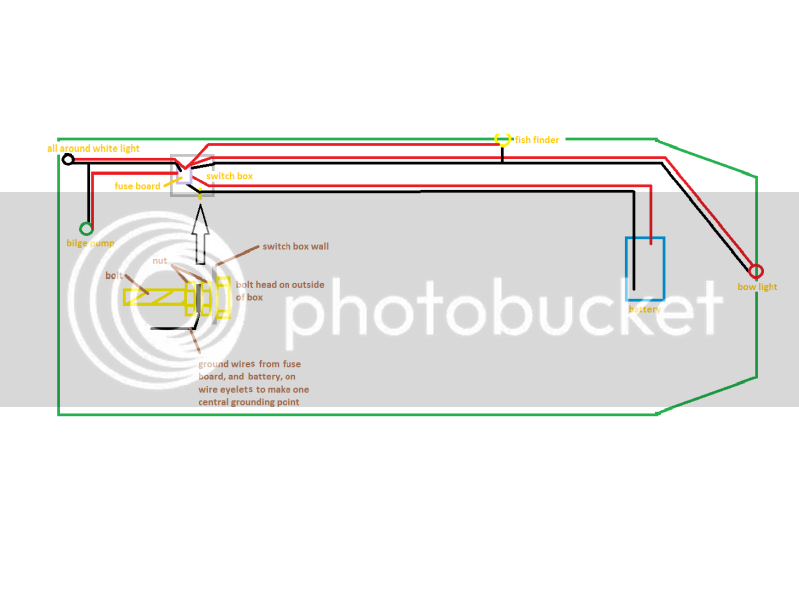I have taken all the old wiring out of the boat and I am ready to start over. I have drawn up a sketch of how I think it should work. NOTE: I am TERRIBLE with electrical and this diagram may need to be improved upon. Let me know if you like it or hate it please!!! The wires are not all in their exact location, I made it so my diagram was clear. My plan is to wire all the wires through a fuse at the switch box. Oh and the trolling motor is on a completely separate battery, so for ease I left it out of the diagram.
Thanks,
David
Thanks,
David




